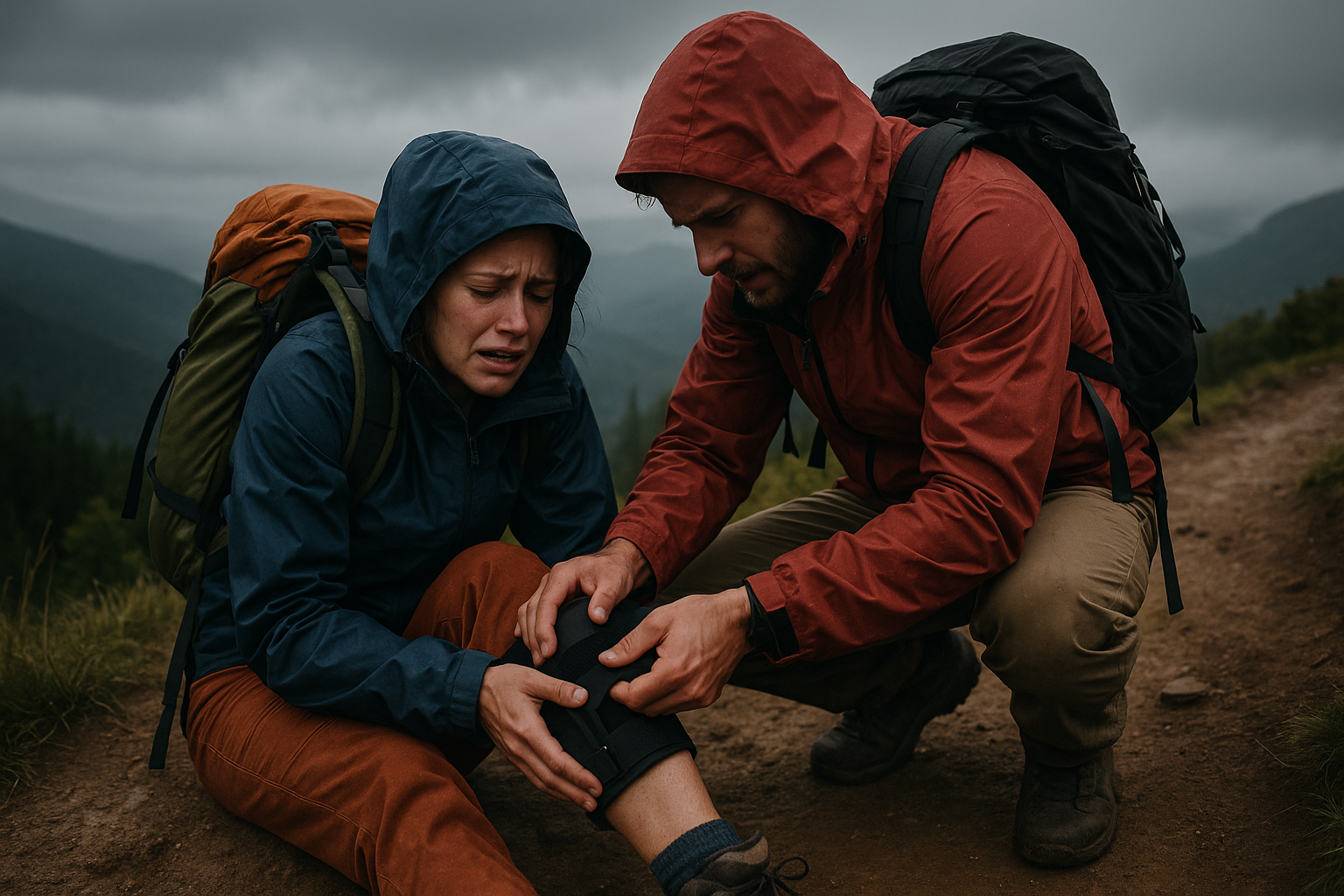You’re Not Done Yet: Ligament Tears in the Wild
The snap comes without warning—a twisted knee or ankle, searing pain, and suddenly your leg won’t hold weight. You’re miles into a remote trek, and help isn’t just a phone call away. Panic sets in as you realize you might not make it back under your own power.
But this isn’t the end. With the right compact bracing gear in your daypack, you can stabilize the injury, regain enough mobility to limp to safety, and turn a catastrophic injury into a survivable situation.
Standard Braces Are Useless Out Here
Forget those heavy, full-knee or ankle braces meant for clinics—they’re bulky, heavy, and won’t fit into a trekking pack. You need field-ready gear that weighs under a pound, stabilizes key joints, and fits into a jacket pocket.
Here’s what seasoned adventurers and field medics actually carry to keep moving when disaster strikes mid-trek.
Compact Bracing Arsenal for Torn Ligaments
1️⃣ Ultralight Compression Wrap with Rigid Inserts (Amazon Available)
- How It Works: These wraps combine the flexibility of compression bandages with removable rigid stays. They compress swelling while stabilizing the joint.
- Why It’s Genius: Packs down to pocket size, weighs under 5 oz, yet can function as a field splint for knees, ankles, or wrists.
- Usage Tip: Practice wrapping before your trip. Mark the midpoint on the wrap with a fabric pen for quick alignment in an emergency.
2️⃣ Foldable Hiking Pole with Wrist Strap (Amazon Available)
- How It Works: Instant crutch substitute. Adjust it for height and secure it with a wrist strap for hands-free stabilization.
- Why It’s Genius: Multipurpose—normally used for balance, but converts into a walking aid when one leg is compromised.
- Usage Tip: Practice using a single pole as a crutch with weight distributed through the strap and handle.
3️⃣ Pocket-Sized Rigid Splint (Amazon Available)
- How It Works: This is essentially a splint that rolls or folds up for ultralight packing. Think SAM splint but more compact. Use it to immobilize joints and reduce pain.
- Why It’s Genius: Flexible enough to contour around a limb, yet rigid when shaped. Fits into a first-aid pouch.
- Usage Tip: Carry pre-cut strips of duct tape to secure the splint to the limb.
4️⃣ Elastic Knee or Ankle Sleeve with Built-In Stabilizers (Amazon Available)
- How It Works: These sleeves slip on like socks but contain side stabilizers and compression zones to support ligaments.
- Why It’s Genius: Lightweight (under 3 oz), easy to put on, and can be worn under pants without creating bulk.
- Usage Tip: Choose a model with adjustable tension straps for a more secure fit and better compression.
5️⃣ Compact Emergency Tourniquet (Amazon Available)
- How It Works: While primarily for bleeding control, a tourniquet can be used creatively to stabilize a hypermobile joint if no other option exists.
- Why It’s Genius: Multitasker—it’s a lifesaving tool that can double as emergency bracing when wrapped and secured.
- Usage Tip: Mark its use for bracing with a tag so it’s not mistaken for blood control gear during panic situations.
Silent, Low-Visibility Bracing in the Field
In some scenarios, you don’t want to draw attention—whether from wildlife or potential threats. Here’s how to stabilize quietly:
- Choose muted-color gear—black, grey, or earth tones—to blend in.
- Wrap bracing gear under outer clothing to conceal injury and reduce visual cues.
- Use quiet materials like elastic wraps instead of noisy Velcro-based braces.
Emergency Trekker’s Packing List
🎒 Compression Wrap: Folded flat, stored in hip pocket or outer pouch.
🎒 Foldable Hiking Pole: Secured on side straps, ready for quick deployment.
🎒 Rigid Splint: Rolled and packed in first-aid kit with tape strips.
🎒 Elastic Sleeve: Packed flat or rolled in side pocket.
🎒 Tourniquet: Marked and attached to gear loop for rapid access.
💡 Quick Reference Card: Include wrapping diagrams and emergency stabilization tips for memory-fog moments.
Real-Life Hack: “Pack-In Splint Trick”
If you’re caught without dedicated splint gear, use what you have:
- Trekking Pole Splint: Use your pole and bandana to immobilize a limb.
- Stuff Sack Splint: Roll up a stuff sack tightly, secure it with a belt or cord around the injury.
- Layered Sock Splint: Stack spare socks over the injury to create compression and support.
These improvisations buy you time and mobility to get back to safety.
Amazon-Available Gear Breakdown
| Gear | Why It Matters | Weight |
|---|---|---|
| Compression Wrap w/ Inserts | Stabilizes joint while compressing swelling | ~5 oz |
| Foldable Hiking Pole | Converts into crutch or splint aid | ~7 oz |
| Compact Rigid Splint | Immobilizes joint, flexible yet strong | ~4 oz |
| Elastic Sleeve w/ Stabilizers | Instant support, low-bulk, easy fit | ~3 oz |
| Emergency Tourniquet | Stabilizes or controls bleeding | ~2 oz |
Conclusion: Mobility Is Survival
A torn ligament mid-trek can feel like a death sentence, but it doesn’t have to be. With compact, field-tested bracing gear in your pack—and the knowledge to use it—you can stabilize the injury, reduce pain, and move toward help instead of waiting helplessly. Out here, preparation is the difference between a rescue and a tragedy.

